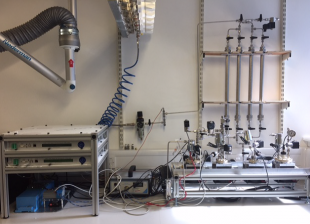Carbon dioxide emissions generated by fossil fuels utilisation are forcing a rapid increase in atmospheric carbon dioxide concentration, approaching 450 ppm by 2035 and resulting in a 77-99% probability of exceeding 2°C global warming.
The steady acceleration of the average global carbon dioxide concentration in the atmosphere demonstrates that the plans for emissions reduction have not been put into action and additional solutions which could be disregarded decades ago, have to be included now.
Direct air capture (DAC), that enables carbon dioxide removal from the ambient air, is an option mentioned by tthe Intergovernmental Panel on Climate Change as a measure to hit directly the cause of climate change. In order to have reasonable effect on global warming, DAC technologies have to be deployed on a scale directly linked to the global petroleum consumption, which results in a scale of an order of 1 Gt of carbon dioxide per year.
From the technological viewpoint, the removal of carbon dioxide at extremely dilute conditions is not an issue. Technologies for carbon dioxide removal directly from air have already been developed in the past. One of them is the air revitalization system working on board of the International Space Station.
The real technological challenge is to concentrate and compress that amount of carbon dioxide at conditions compatible with long term geological storage and to do this by using renewable energy.
Within the ACCA project, we have realised a temperature swing adsorption air capture system which is based on a sequence of adsorption stages powered by heat at 95°C.



